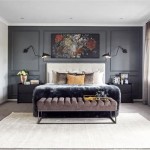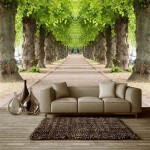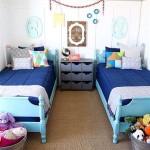Dark Blue and Orange Living Room Decorations Ideas
The combination of dark blue and orange in a living room provides a striking visual contrast, blending sophistication with warmth and energy. This color palette offers numerous opportunities for creating a space that is both inviting and stylish. The success of this design scheme hinges on careful consideration of hue, saturation, and the balance between these contrasting colors.
Dark blue, often associated with tranquility and stability, serves as a grounding element. Its depth can evoke feelings of calmness and sophistication, making it an excellent choice for creating a relaxing atmosphere. Conversely, orange, a vibrant and energetic color, injects life and enthusiasm into the space. Orange tones range from muted terracotta to bright, almost neon shades, providing flexibility in adapting the scheme to specific aesthetic preferences.
Effectively incorporating these colors requires strategic planning and an understanding of how they interact with light and the existing architecture of the room. The interplay between dark blue and orange can result in diverse design outcomes, from a modern, minimalist aesthetic to a more bohemian and eclectic style.
Balancing Dark Blue and Orange Proportions
One of the primary considerations when designing a dark blue and orange living room is the proportion of each color used. Overuse of either color can lead to an imbalance, resulting in a space that feels either overwhelming or underwhelming. A common approach is to utilize dark blue as the dominant color, providing a neutral backdrop, and then introduce orange as an accent color to create pops of visual interest.
For example, dark blue walls can be paired with orange throw pillows, artwork, and decorative accessories. This approach allows the depth and richness of the dark blue to establish a sense of calm while the orange accents contribute energy and vibrancy. Alternatively, a lighter shade of blue can be used as the primary color, allowing for broader use of orange without overpowering the space.
Another strategy involves using a neutral foundation, such as gray or beige, and incorporating both dark blue and orange as accent colors. This approach provides a more subtle integration of the color scheme, preventing it from becoming too visually demanding. The neutral backdrop allows the dark blue and orange accents to stand out while maintaining a sense of balance and harmony.
The proportion of each color should also take into account the size and natural lighting of the room. In smaller rooms, excessive use of dark blue can make the space feel cramped and enclosed. In such cases, lighter shades of blue or a greater proportion of orange may be more appropriate. Conversely, larger rooms can accommodate a greater use of dark blue, creating a more dramatic and immersive atmosphere.
Incorporating Textures and Materials
The successful integration of dark blue and orange in a living room hinges not only on color but also on the textures and materials used. Different textures can enhance the visual interest of the space and contribute to a more layered and sophisticated design.
For example, a dark blue velvet sofa can provide a luxurious and tactile element, while orange linen throw pillows can add a touch of casual comfort. The contrast between these textures can create a dynamic interplay that enhances the overall aesthetic of the room. Similarly, incorporating natural materials, such as wood, can provide a grounding element that complements both the dark blue and orange tones.
Consider incorporating materials that offer a subtle sheen or reflectivity to enhance the lighting within the room. Metallic accents, such as gold or copper, can complement the orange hues and add a touch of elegance. Mirror surfaces can also be used to reflect light and create a sense of spaciousness, particularly in smaller rooms.
Rugs play a crucial role in defining the space and adding texture. A rug with geometric patterns that incorporate both dark blue and orange can tie the color scheme together and provide a focal point for the room. Alternatively, a neutral rug with subtle textures can provide a grounding element that allows the furniture and accessories to stand out.
Window treatments also present an opportunity to introduce texture and pattern. Dark blue curtains can create a sense of privacy and block out unwanted light, while sheer orange curtains can allow natural light to filter through, creating a warm and inviting glow. The choice of fabric and texture should be carefully considered to complement the overall design scheme and enhance the visual appeal of the room.
Selecting Complementary Furniture and Decor
The selection of furniture and decor items is crucial for achieving a cohesive and harmonious dark blue and orange living room. The style of furniture should complement the overall design aesthetic, whether it is modern, traditional, or eclectic.
Consider furniture pieces that incorporate natural materials, such as wood or wicker, to add warmth and texture. A wooden coffee table or side table can provide a grounding element that complements the dark blue and orange tones. Upholstered furniture in neutral colors, such as gray or beige, can serve as a backdrop for the accent colors and prevent the room from feeling too overwhelming.
Artwork plays a significant role in enhancing the visual appeal of the living room. Pieces that incorporate both dark blue and orange, or complementary colors, can tie the design scheme together and add a personal touch. Consider abstract art, landscapes, or portraits that resonate with your personal style and preferences.
Decorative accessories, such as vases, lamps, and candles, can be used to add pops of color and visual interest. Orange vases filled with flowers or greenery can brighten up a dark blue bookshelf or mantelpiece. Lamps with orange shades can provide warm and inviting light, while candles can create a cozy and relaxing atmosphere.
Plants can also be used to add life and vibrancy to the living room. Greenery complements both dark blue and orange, creating a natural and refreshing aesthetic. Consider incorporating a variety of plants, such as ferns, succulents, and flowering plants, to add texture and visual interest.
The arrangement of furniture and decor is crucial for creating a functional and inviting living room. Ensure that the furniture is arranged in a way that promotes conversation and interaction. Create comfortable seating areas and provide adequate lighting for reading and relaxation. The placement of artwork and decorative accessories should be carefully considered to create a balanced and visually appealing space.
Utilizing Lighting to Enhance the Color Scheme
Lighting is a critical element in interior design, and it plays a particularly important role in a dark blue and orange living room. The way light interacts with these colors can significantly impact the overall mood and atmosphere of the space.
Natural light is essential for brightening up the room and enhancing the vibrancy of the orange tones. Maximize natural light by keeping windows clean and unobstructed. Consider using sheer curtains or blinds to allow natural light to filter through while maintaining privacy.
Artificial lighting should be carefully planned to complement the natural light and create a warm and inviting atmosphere. Incorporate a combination of ambient, task, and accent lighting to meet the diverse needs of the living room. Ambient lighting, such as overhead fixtures or recessed lighting, provides general illumination for the room. Task lighting, such as table lamps or floor lamps, provides focused light for reading or other activities. Accent lighting, such as spotlights or picture lights, highlights specific features or artwork.
Warm-toned light bulbs can enhance the orange hues and create a cozy and inviting atmosphere. Cooler-toned light bulbs can emphasize the depth and sophistication of the dark blue tones. Experiment with different light bulb temperatures to find the combination that best suits your preferences.
Dimmer switches can be used to adjust the intensity of the lighting, creating different moods for different occasions. Dimming the lights can create a more intimate and relaxing atmosphere, while brightening the lights can provide a more energetic and stimulating environment.
Lighting fixtures can also be used to add visual interest and complement the design scheme. Consider incorporating lamps with unique shapes, textures, or colors that enhance the overall aesthetic of the living room. Chandeliers or pendant lights can add a touch of elegance and sophistication, while sconces can provide accent lighting and create a more intimate atmosphere.
Implementing Different Shades and Tones
To avoid a flat or monotonous look, it is vital to use different shades and tones of both dark blue and orange. This variation adds depth and complexity to the design, creating a more visually appealing and dynamic space.
For dark blue, consider using navy blue, indigo, or even a deep teal. These variations offer subtle differences that can impact the overall mood of the room. A navy blue wall, for example, might create a stately and classic feel, while an indigo accent piece could add a touch of bohemian flair.
Similarly, orange offers a wide spectrum of shades. Burnt orange and terracotta provide a more muted and earthy feel, ideal for creating a warm and inviting atmosphere. Brighter shades like tangerine or coral can inject energy and playfulness into the space. Combining these different shades strategically can create a layered and dynamic effect.
Mixing different tones also involves considering the saturation levels of the colors. A highly saturated orange will appear much more vibrant and intense than a desaturated, muted orange. By playing with saturation, it is possible to control the visual impact of each color and create a harmonious balance.
Using gradients or ombre effects can also be an effective way to incorporate different shades and tones. For example, a wall with a gradient from dark blue at the bottom to a lighter blue at the top can create a sense of depth and spaciousness. Similarly, pillows or curtains with ombre patterns can add a subtle touch of visual interest.
The interplay of light and shadow also affects how different shades and tones are perceived. Natural light can enhance the vibrancy of lighter shades, while shadows can add depth and mystery to darker shades. By carefully considering the lighting conditions in the room, it is possible to create a space that is both visually appealing and emotionally resonant.

45 Blue And Orange Bedroom Ideas Easy Home Concepts

Spice Up Your Home Creative Burnt Orange Living Room Ideas

A Living Room With Stunning Blue And Orange Decor

40 Blue Living Room Ideas Transform Your Space With Calming Hues

Navy And Orange Living Rooms Design Ideas

Orange Classic Blues Perfect Pairing Caron S Beach House

111 Bright And Colorful Living Room Design Ideas Digsdigs

Fall Into Orange Living Room Accents For All Styles

Orange And Black Interiors Living Rooms Bedrooms Kitchens

Design Inspiration Nature S Color Palettes Archi Living Com Web By Architects And Designers
Related Posts







